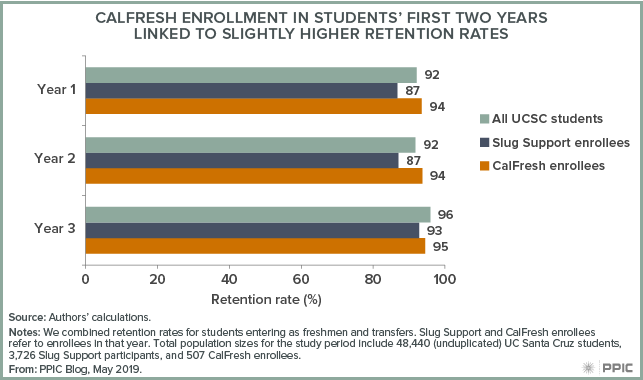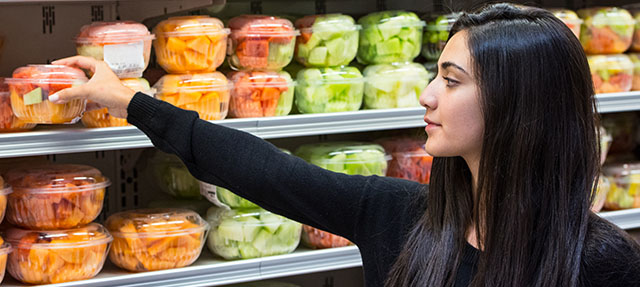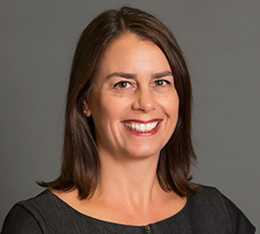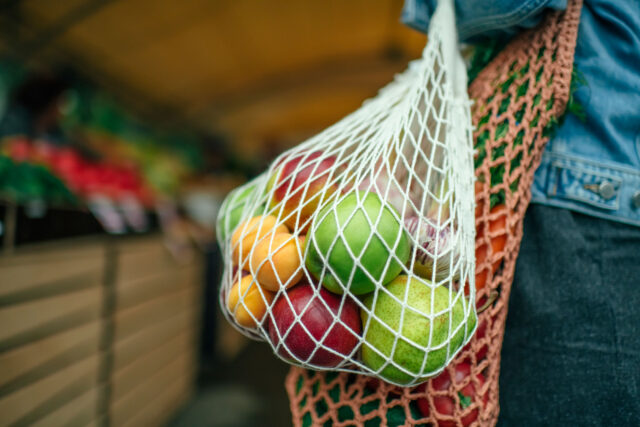Student hunger on college campuses is a serious concern, potentially affecting students’ health and academic achievement. At the University of California (UC), as many as 42% of students faced some degree of food insecurity in 2016, with one in five reporting reduced food intake due to limited resources. With funding provided by the UC system, individual campuses have undertaken a range of strategies to address the problem—including food pantries, free food cafes, and efforts to increase enrollment in CalFresh, the state’s food assistance program for low-income residents.
Increasing CalFresh enrollment among college students has also been the focus of recent state legislation, which has eased work requirements and removed barriers to enrollment. For example, low-income or first-generation students who qualify for California’s Educational Opportunity Program (EOP) are now automatically eligible for CalFresh. In 2016, just 2% of UC students were enrolled in CalFresh, but we don’t yet know how recent changes to eligibility have affected enrollment.
In addition to providing food assistance, enrolling in CalFresh appears to be a promising strategy to promote student success, according to our research at the University of California, Santa Cruz (UCSC). Our study of students who participated in the campus’s Slug Support program—a basic-needs program that provides food, housing, financial, and crisis assistance for students—shows that CalFresh enrollment is associated with improved retention in students’ first two years.
The first-year retention rate for Slug Support students (87%) is substantially lower than the overall retention rate at UCSC (92%), but CalFresh enrollees experienced a slightly higher-than-average first-year retention rate (94%). These results are especially encouraging as students who are eligible for CalFresh are socioeconomically disadvantaged and more likely to come from under-resourced high schools—characteristics typically associated with lower retention. This pattern persists for those enrolling in CalFresh their second year but wanes after that: students who wait to enroll in CalFresh until their third year have slightly lower retention rates than third-year UCSC students overall.

Compared to Slug Support students who used other services but did not enroll in CalFresh, CalFresh enrollees were consistently more likely to return to campus the following fall. About a third (34%) of UCSC students are EOP-eligible—and therefore now eligible for CalFresh—suggesting that recent legislative changes have the potential to greatly improve food security and student outcomes.
Governor Newsom’s revised budget for 2019–20 allocates $18.5 million to address hunger and housing in the UC system. To build upon recent efforts, policymakers and higher education leaders should consider additional mechanisms to support access to CalFresh—such as tracking CalFresh enrollment among eligible students, confirming students are aware of their eligibility, and streamlining the enrollment process. These steps could help further ensure that California students have access to the resources that will help them complete their degrees.
Brandon Balzer Carr is a doctoral candidate in psychology at UC Santa Cruz. Rebecca London is an adjunct fellow at PPIC and an assistant professor in sociology at UC Santa Cruz.






